Evidence quality clouds 'stage three' arguments
Day three of Floyd Landis' arbitration hearing began with the continuation of testimony from one of...
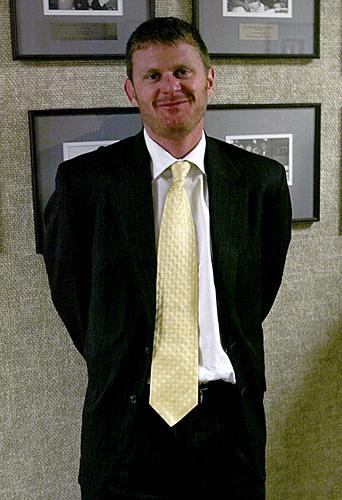
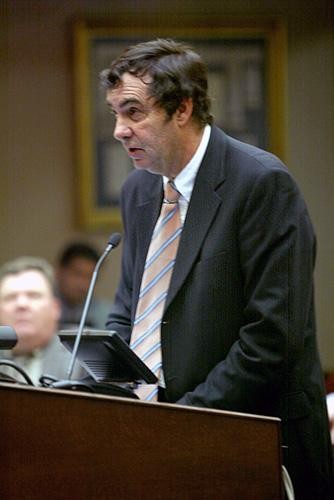
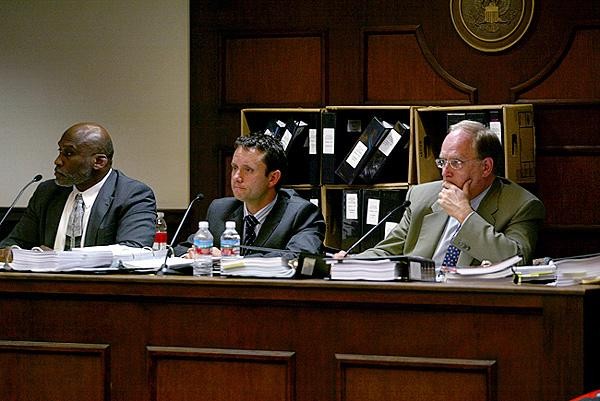
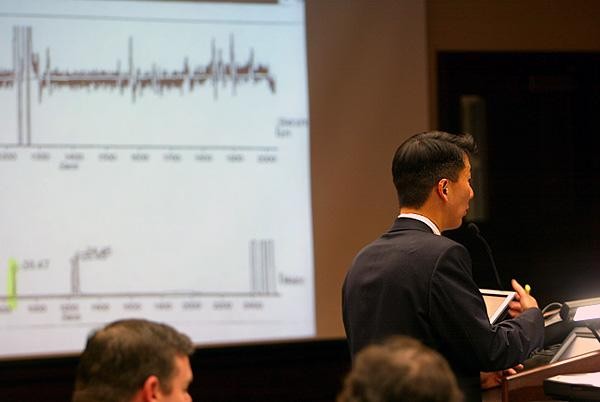
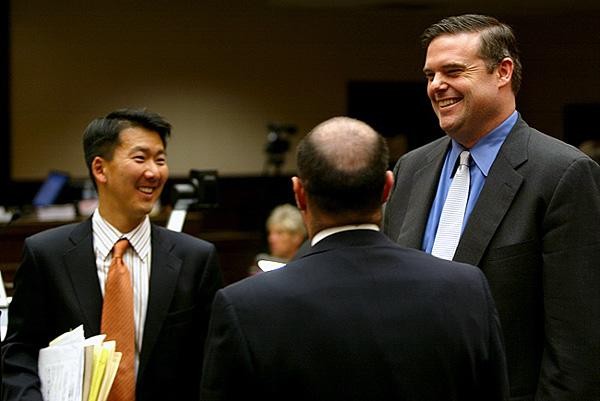
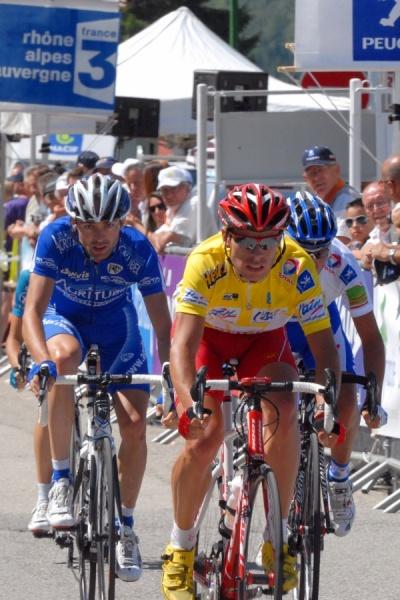
News feature: Floyd Landis' arbitration hearing, May 17, 2007
Day three of Floyd Landis' arbitration hearing began with the continuation of testimony from one of the two LNDD analytical chemists that performed the original as well as the retesting of the Landis samples from stage 17 of last year's Tour. Cynthia Mongongu's direct examination by the USADA attorney concluded Tuesday's proceedings and the Landis side had all night to prepare for the cross-examination, likely in an effort to show errors in the processing of the samples and to discredit Ms. Mongongu's work as a technician. Floyd Landis was again sporting a yellow tie, and was noticeably more jovial at times, particularly in the more frustrating moments of the testimony.
Drama of the day
There seems to be a daily occurrence of drama that brings the hearing to a screeching halt. Yesterday it was the translator, today it was a problem with evidence - or in legal-ease, the "discovery process" (no pun intended). During the afternoon testimony of Ms. Mongongu, the hearing was stopped when Landis' lawyer Maurice Suh objected in response to the witness saying she needed a certain document in order to answer a question of analysis.
"The documents to determine if there is matrix interference here, we never received," said Mr. Suh. "And we asked for them. So because we did not get those documents, we are going to stop the cross right now, with the right to recall this witness."
The USADA lawyers said that the discovery process was long and lengthy, but that the Landis side has finally acknowledged they had everything they needed.
"We have never, ever said we have everything we needed to have," Mr. Suh quickly replied. "We are told [by the witness] that you cannot properly identify this because there is matrix interference."
The latest race content, interviews, features, reviews and expert buying guides, direct to your inbox!
After a recess, USADA lawyer Richard Young responded to Mr. Suh's claims. "That is absolutely not true," said Mr. Young. "They got the electronic data file. If they wanted to give [AFLD Secretary General] Dr. Dautry clear instructions, they should do that. Then when Dr. Dautry and themselves were all in Paris together, he was accepting instructions from them there. It isn't that they didn't get the documents from the file. They are now saying, I guess we got the documents, they are just not enlarged the way they want. The could have asked Dr. Dautry to have it printed in that format, and if they had I guess they would be happy now. If they had asked, they would have in their hands everything they are making a fuss about."
"I absolutely need to respond to that," Mr. Suh quickly retorted. "It would have taken weeks to go in and get the resolution. We got this data on April 5, and we simply did not have the time. We asked for [the files] on February 22, and were told we could not have it because USADA said we would go in and tamper with them."
After yet another lengthy recess, neither side seemed satisfied with the deliberations. However, Mr. Suh rested in his cross-examination with the right to recall later.
Cross-examination: Cynthia Mongongu
Leading off the morning was an appearance from Landis' other attorney Howard Jacobs, who first asked the panel to remove the other LNDD analytical chemist, Claire Frelat, from the hearing room. Jacobs likely wanted Ms. Frelat to be sequestered from hearing the testimony so that her subsequent testimony would be an independent corroboration of the events involving the analysis.
Much of questioning from Mr. Jacobs went to specifically identify the chain of custody for the analysis on July 22, 2007 of the stage 17 sample. At multiple times, the answers of Ms. Mongongu were not direct responses to the exact questions of Mr. Jacobs. The panel chair, Mr. Brunet, even interjected one time to specifically direct Ms. Mongongu to answer the question in as precise a manner as the question that was asked.
The almost painful task of getting answers out of Ms. Mongongu went on with Mr. Jacobs focusing on the use of the IRMS machine. He asked her in multiple ways of how many times the machine has needed service over her tenure, to which she could not exactly say. After numerous rephrasing of the same question, Mr. Jacobs asked:
Q: I don't need an exact number, but can you tell me if it was three times, eight times, 8,000 times? [Landis laughs] A: I would say it was about ten times, but over a period of several days. I know that since 2003 they have come on a number of occasions. He comes several times per year for regular maintenance and he will come whenever we call him.
Following this line of questioning, Mr. Jacobs showed Ms. Mongongu the L'Equipe article that contained the leaked test results of the reprocessing. She said she had seen it prior but had never spoken to any reporters about any tests. She was asked directly if she provided the information for the story, and replied, "Absolutely not." Mr. Jacobs asked her if she asked anyone at LNDD if they had leaked the information, to which she also replied negatively. Finally, Mr. Jacobs asked if her supervisor, Dr. Jacques de Ceaurriz, had done anything in response to the leaked confidential information, just days after the test. "He was not happy about it," she replied.
Chain of custody
The handling of the samples within the LNDD lab seems to be one of the central pushing points for the Landis team. Mr. Jacobs directed his examination to the LNDD documents illustrating the chain of custody for the samples that were reprocessed last month.
Q: You got the bottle at 11:20. Had it for five minutes. Then operator 18 took it. A: To store it, it is written as 12:45.
One of the running themes that the Landis side continued to push Ms. Mongongu on is the differences in her range of recollection of memories involving these specific sample tests. The Landis side's questions throughout the day often pointed to inconsistencies in this area.
In a sign of inverse tactics, the Landis side seemed to be preempting a possible charge by USADA regarding the retesting of the samples in April. Mr. Jacobs produced a document that included Ms. Mongongu's pre-hearing testimony that Landis observers Paul Scott and Dr. Simon Davis acted inappropriately during the testing, possibly illustrating her feelings towards the entire event:
On Tuesday, April 17, 2007, the top of a small, partially filled test tube broke. Such breakage is not uncommon. When Mr. Scott saw that the tube was broken, he jumped up and accosted me. Mr. Scott demanded to know what had happened, became very agitated, and encroached into my space as I was working. As I was distracted in my work by Mr. Scott's interference...
Ms. Mongongu elaborated on her statement in the document, saying that she even put a line of tape on the floor in the lab to show the observers where they were "not to cross". "I needed to be able to concentrate on my work," Ms. Mongongu said.
Following this Mr. Jacobs showed Ms. Mongongu an article in the WADA code that said laboratory personnel have the power to have observers removed from the test, and she acknowledged having read it but not taking that step.
Log jam
After this, Maurice Suh took over the cross-examination to focus on the log sheets from the LNDD lab's IRMS machine. These log sheets were the centre of much discussion and testimony yesterday, with multiple entries having the same file name - with the Landis side leaning on the contention that this erased the data that was present in the file beforehand.
Q: [Suh] You testified yesterday that the reason why you re-ran [the analysis] occurred because you had to 'prime the liner?' A: [Ms. Mongongu] When you put a new insert on the instrument you have to basically perform a few injections to condition it.
Mr. Suh then asked numerous months from the previous years to which she responded no.
Q: The only time you remember changing the liner is this month? A: Yes, I remember changing the insert because we were starting those specific analysis and I said would change this specific liner. That is why I am certain.
Much of the questions for Ms. Mongongu by Mr. Suh focused on the time gaps on the log, and what exactly occurred during those times. Every time, Ms. Mongongu said she did not recall, and Mr. Suh would move on to another time for the same reaction. Next, Mr. Suh pointed to the log sheet showing that the sequence that was supposed to run automatically showed a break of five hours.
Q: Does the sequence routinely pause for five hours? A: No.
Mr. Suh continued his cross-examination, focusing more on the testing procedures until he interrupted his cross-examination for the discovery and evidence dispute.
At the end of the day, the hearing concluded with one of the panel, Chris Campbell, taking time to question Ms. Mongongu on certain parts of her testimony, seemingly in an attempt to clear-up some earlier statements. In one instance, he had her read the definition of an "adverse analytical finding".
Hearing notes
Before starting the day, the panel's chair indicated that there is a finite amount of time for each side to examine witnesses. Each side started the hearing with 23 hours of examination and cross-examination time. At the beginning of Wednesday's session, the Landis side has 19.6 hours remaining and USADA had 16.7 hours. However, that will obviously change after today's all-Landis cross-examination of Ms. Mongongu.
The witness list only changes slightly, with Floyd Landis added as a possible witness for his side. He was already on the list for the USADA side. Other names of note are Greg Lemond for USADA. Richard Young noted that Lemond will definitely testify tomorrow, even if the testimony of Dr. Ayotte needs to be interrupted to fit with his travel schedule..
The witnesses likely to be called by USADA next (in order):
Claire Frelat LNDD Analytical Chemist
Photography
For a thumbnail gallery of these images, click here
Images by Mark Zalewski/Cyclingnews
- Floyd Landis was noticeably more jovial today, and was of course sporting a yellow tie.
- Maurice Suh was again questioning the accuracy of methods employed by the LNDD's analytical chemists.
- The arbitration panel (l-r): Christopher Campbell, President Patrice Brunet and Richard McLaren.
- USADA attorney Richard Young refuted claims by the Landis camp that evidence was withheld from them.
- Both sides' lawyers have a small laugh over the evidence dispute.
Cyclingnews' coverage of the Floyd Landis case
September 28, 2008 - Landis takes case to US federal court
September 10, 2008 - Landis signing with current Health Net-Maxxis team for 2009
July 1, 2008 - CAS delivers final blow to Landis legal challenge
June 30, 2008 - Landis loses final appeal
June 28, 2008 - Landis decision due Monday
March 12, 2008 - Landis' judgment day nears
October 21, 2007 - Landis files appeal with CAS
October 18, 2007 - AFLD takes another look at Landis case
Thursday, October 11 - Landis continues fight, appeals to CAS
Saturday, September 22 - UCI officially names Pereiro 2006 Tour champion, Landis case raises issues
Friday, September 21 - Landis' appeal denied, two year suspension levied